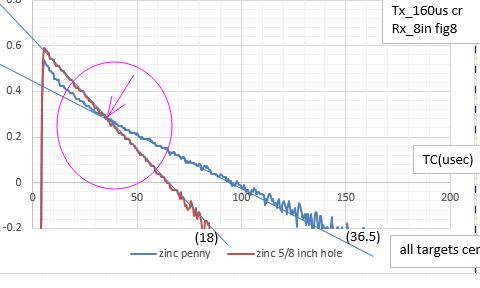Was reading ITMD, The Concentric Ring Experiment page 248. The experiment used an IB VLF detector to compare results. Was looking at some data I posted in the past using a PI (IB coil) to compare. One of the charts was labeled wrong, constant current instead of constant rate. Including corrected charts. The penny with the hole has a higher signal at start of decay. The copper penny with hole charts almost the same as zinc penny. The third chart includes the return signal when Tx is on. Tx on slope close to Tx off slope after slope is straight line decay linear X log Y. Calculated frequency for the targets, (1/2pi)/TC. Is that correct. Would the detector frequency effect which signal was higher, coin or ring when using a VLF detector? If yes, is there way to change the test using a PI that would cause the penny to have a higher signal than the ring?
Just noticed penny has higher signal than ring when Tx on. Does that mean penny should be higher than ring with a VLF?
Just noticed penny has higher signal than ring when Tx on. Does that mean penny should be higher than ring with a VLF?


Comment